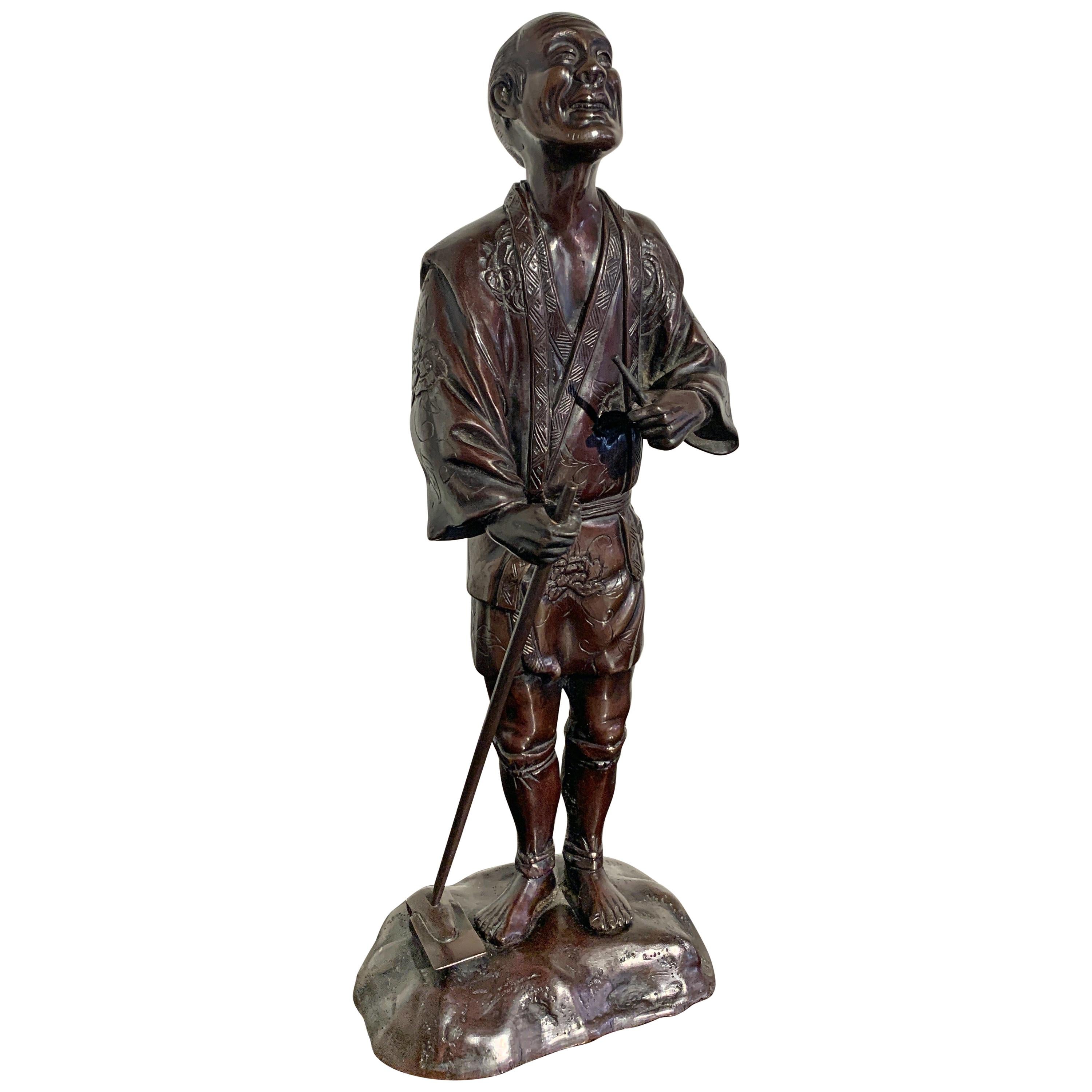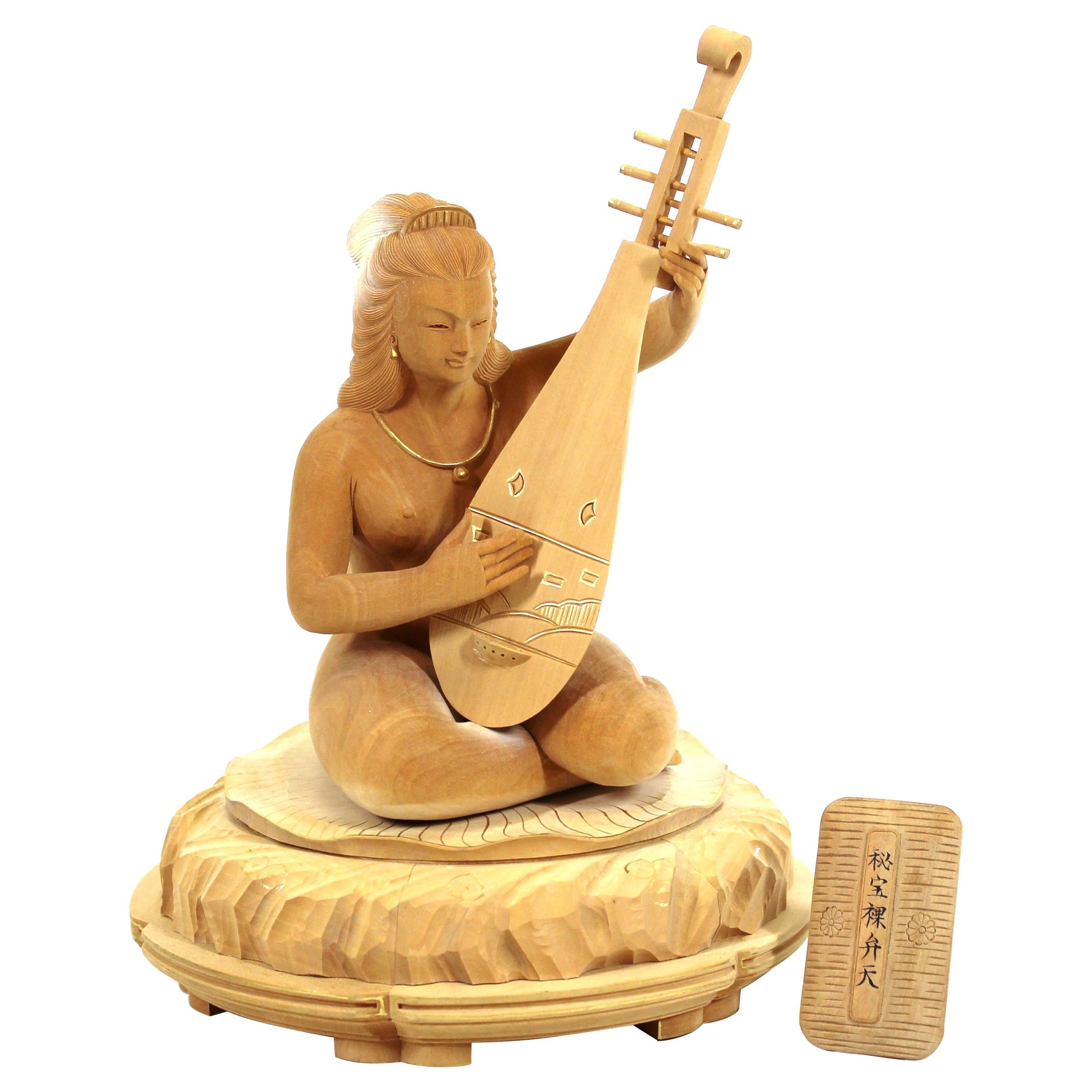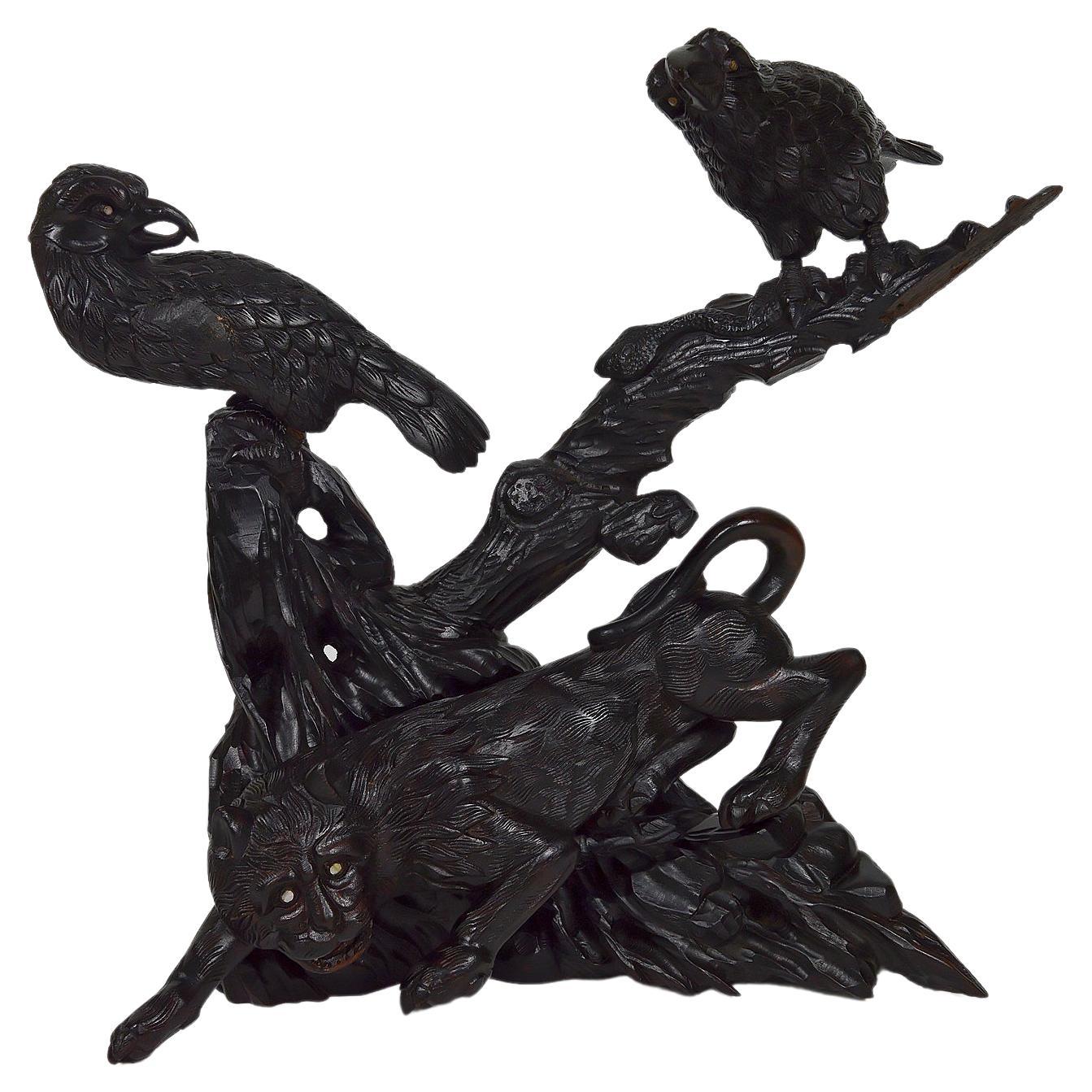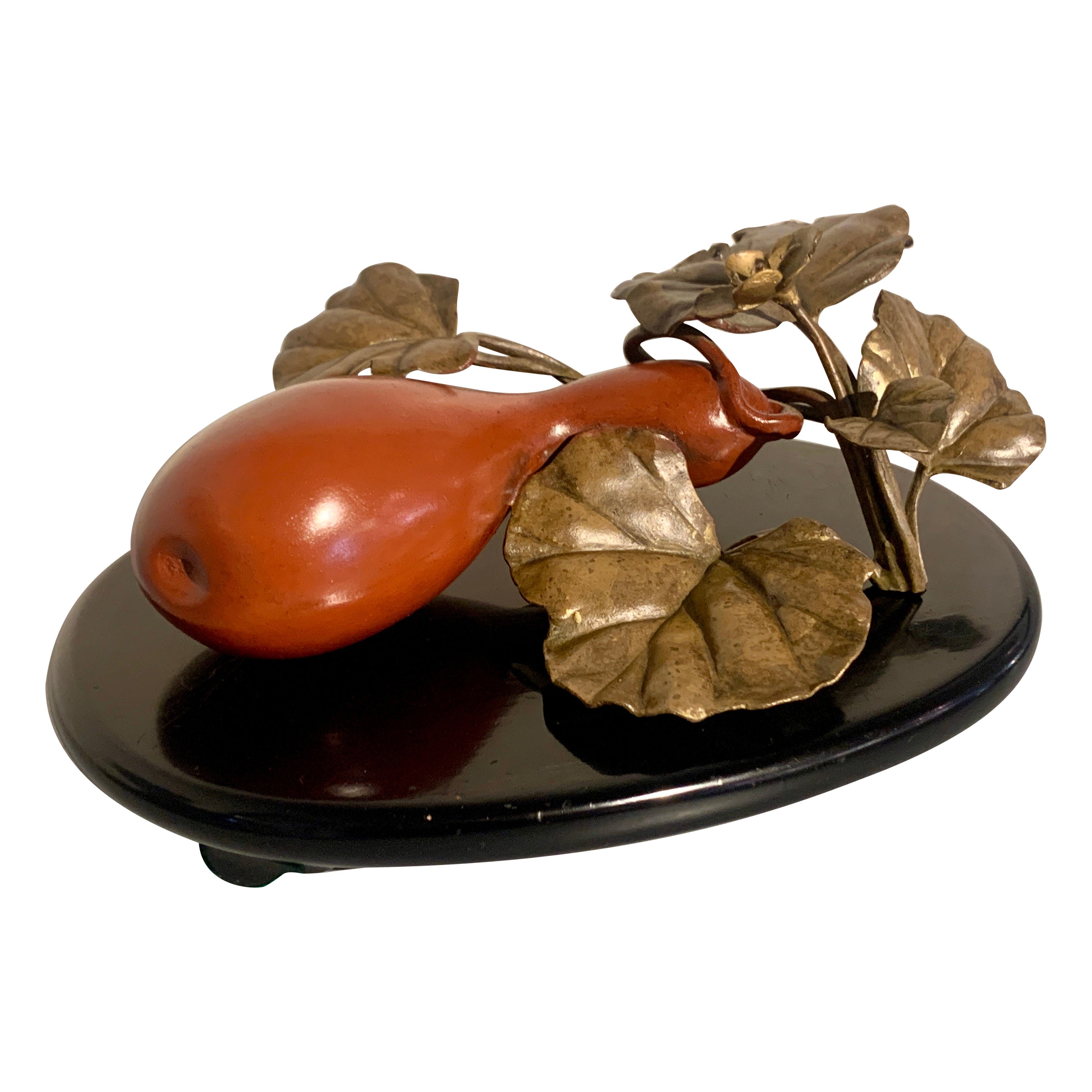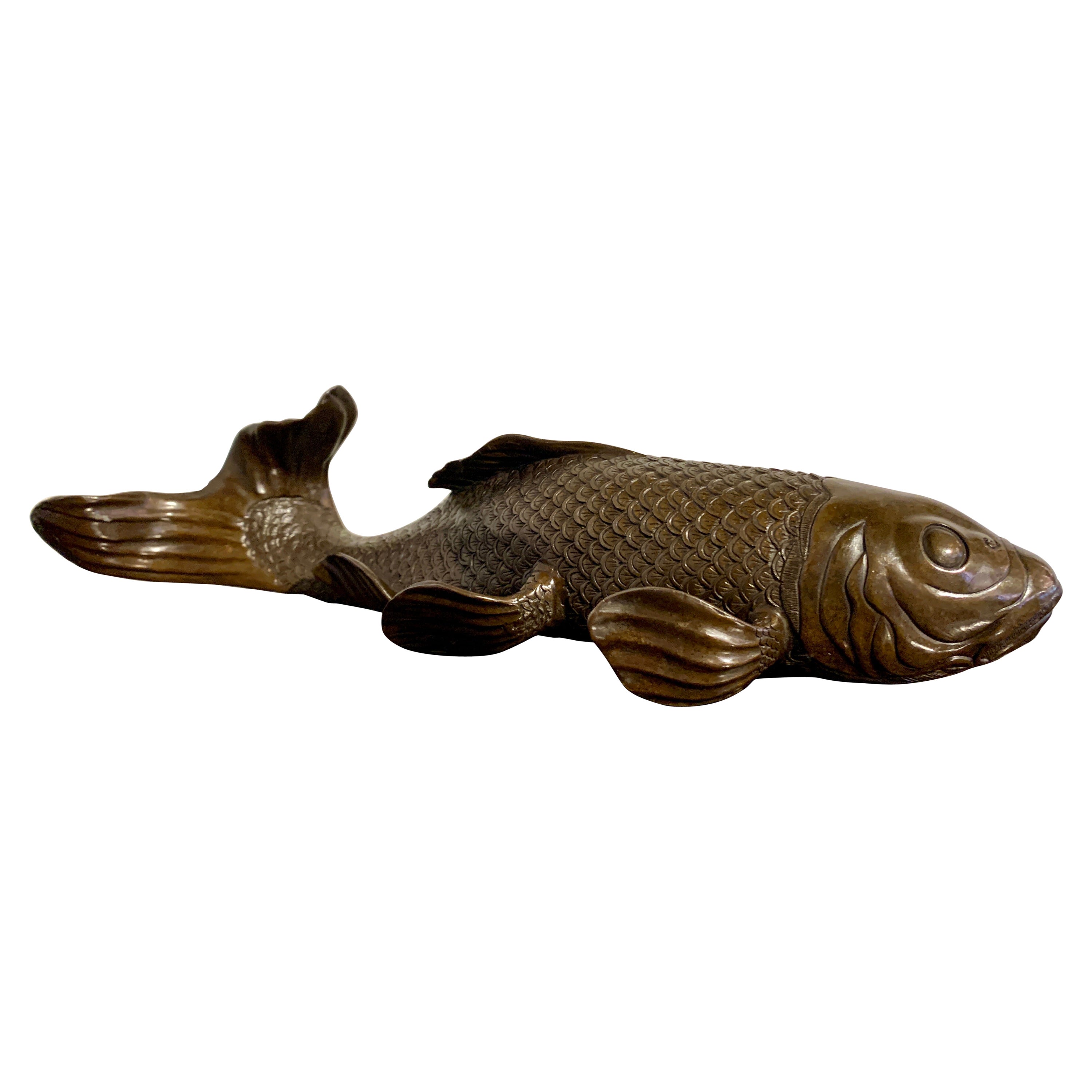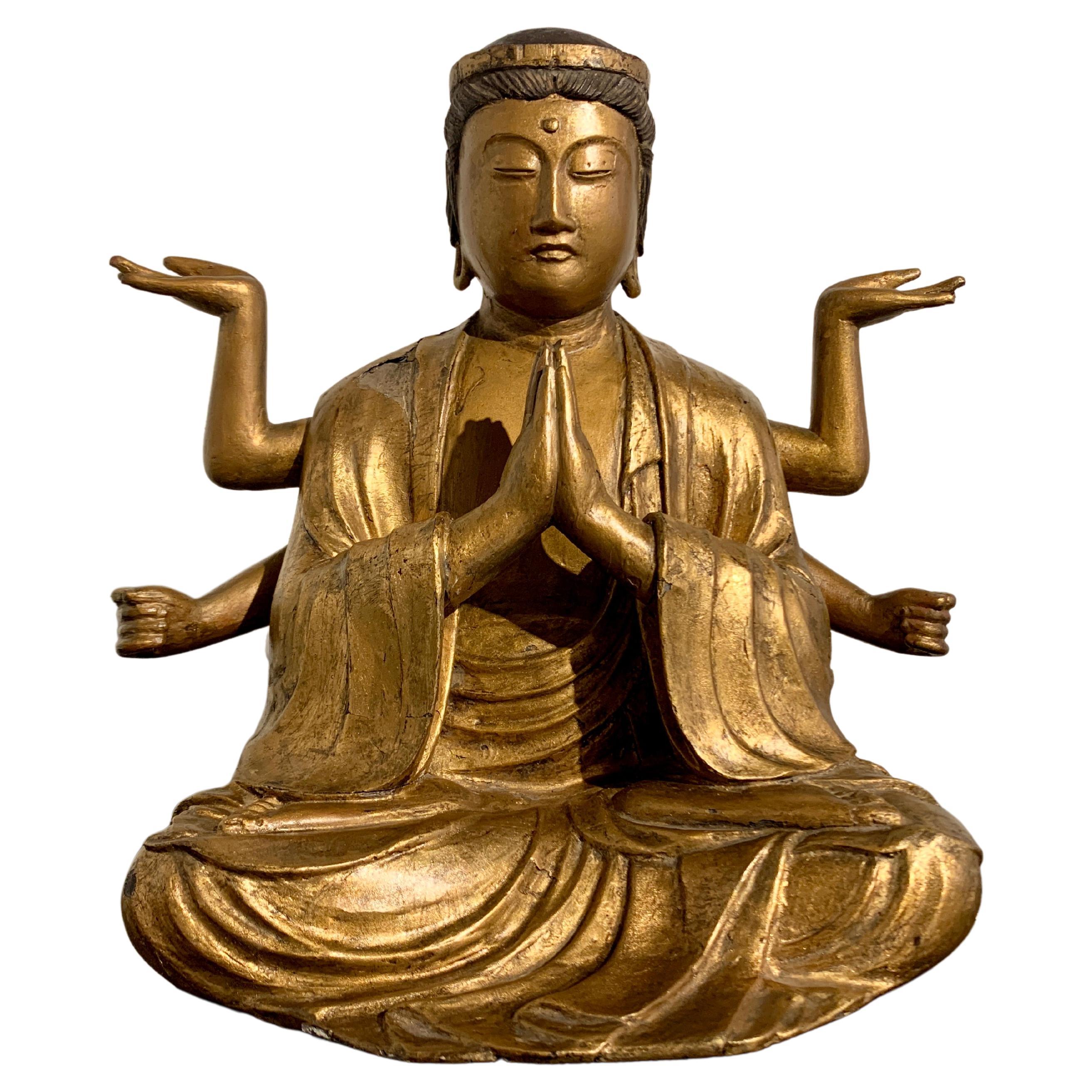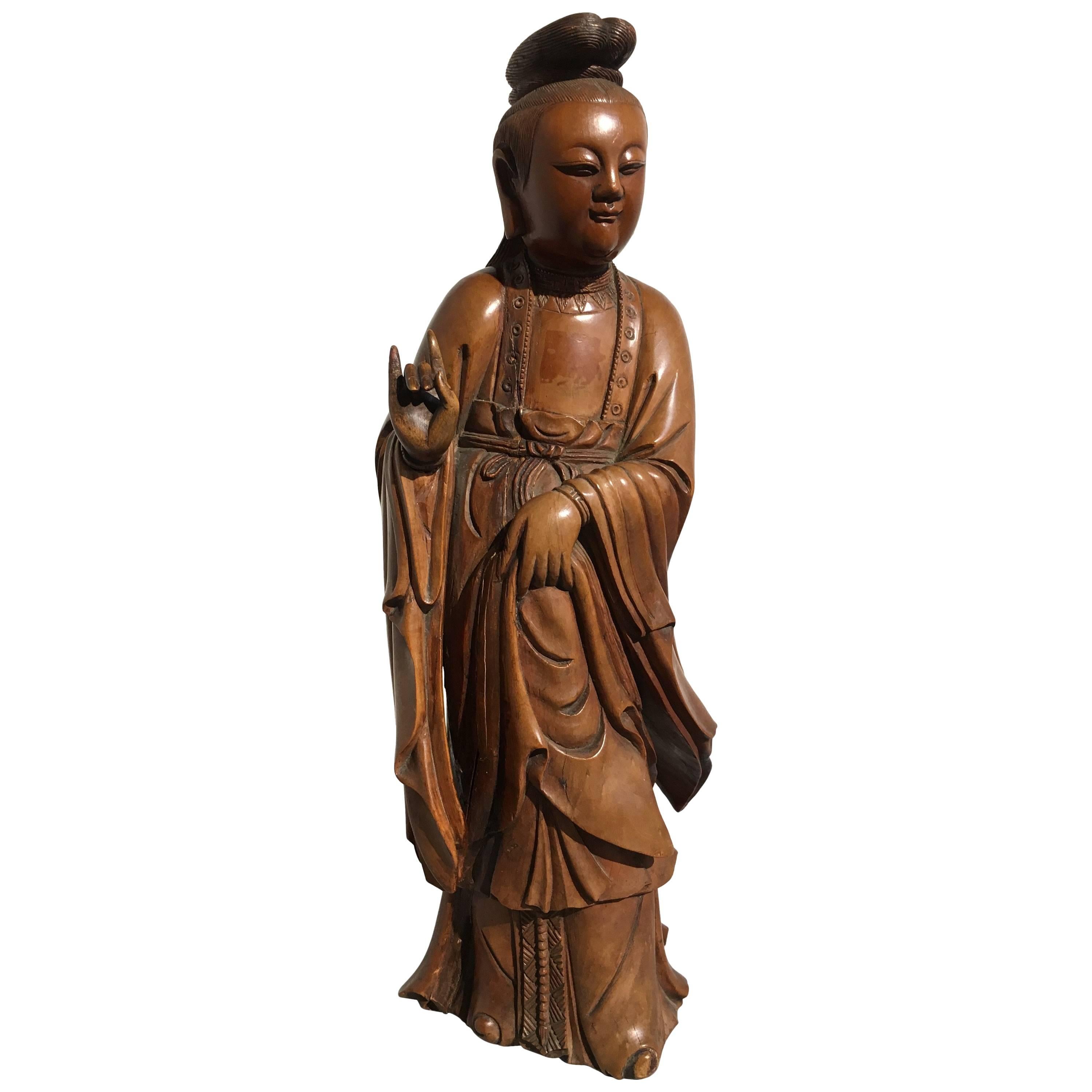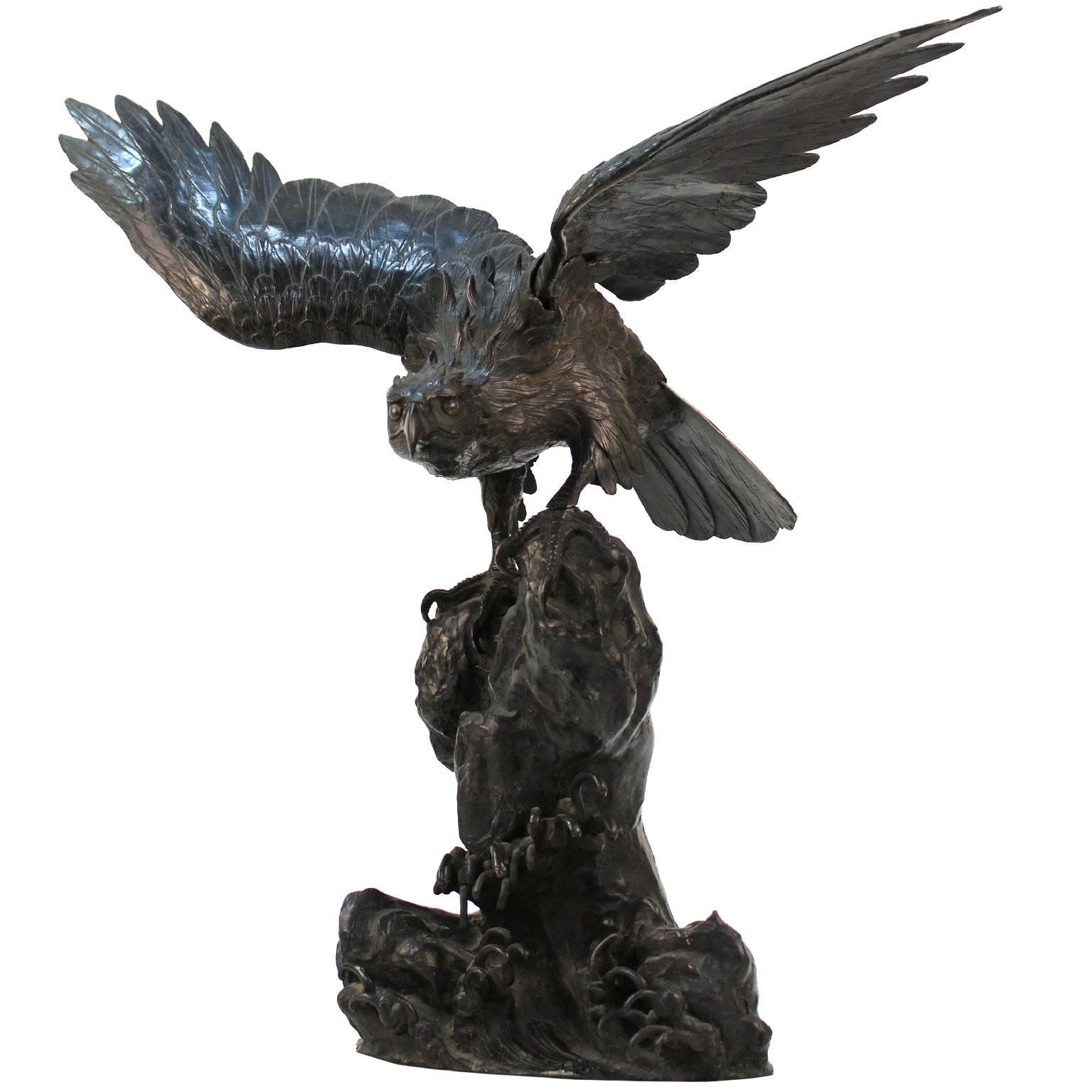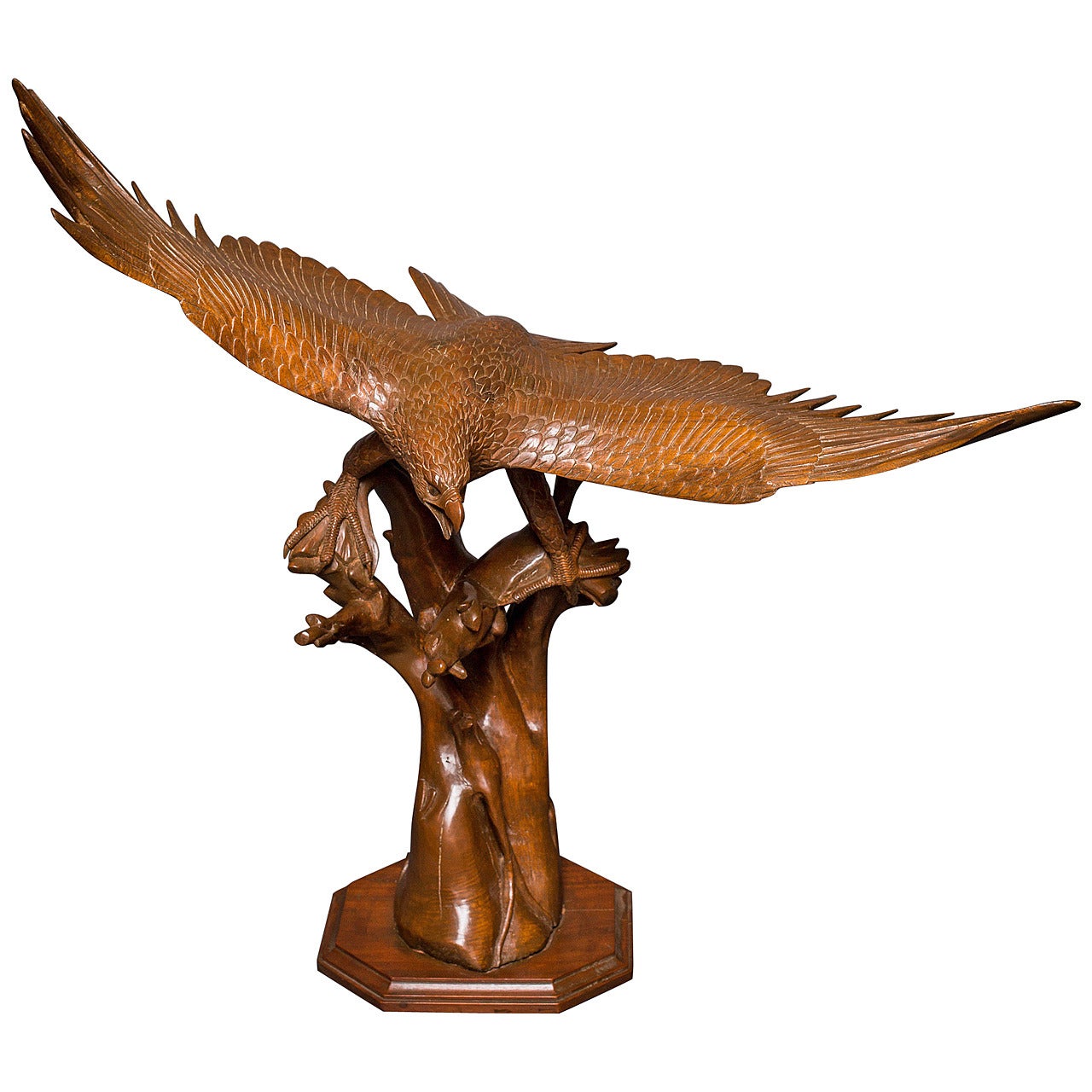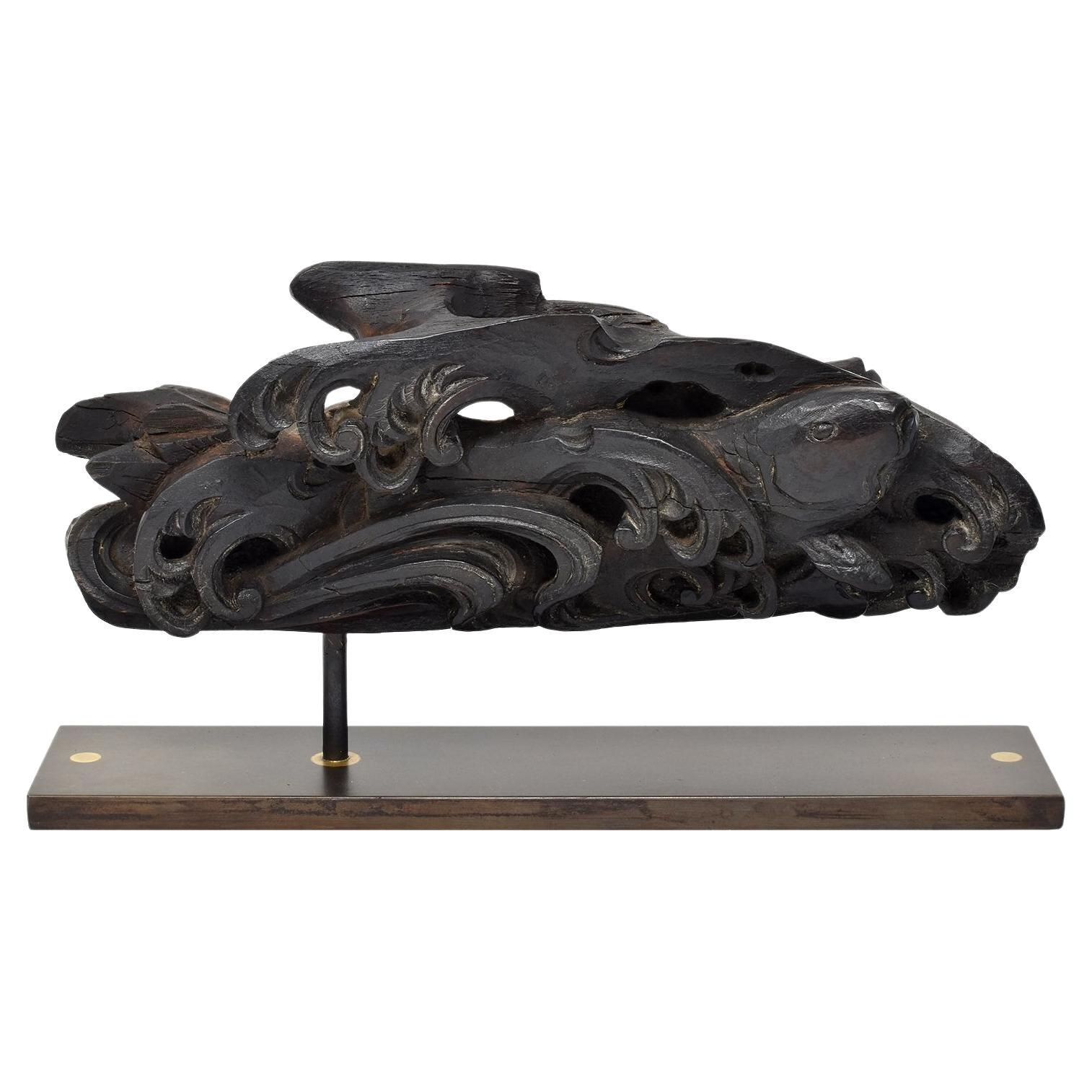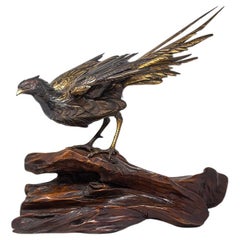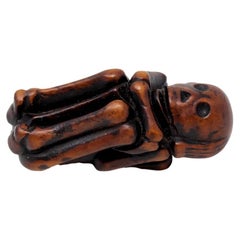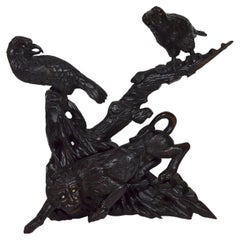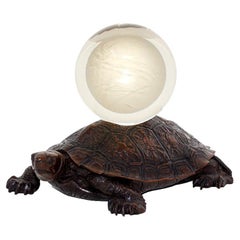
Japanese Boxwood Tortoise Okimono Matsuyama
View Similar Items
Want more images or videos?
Request additional images or videos from the seller
1 of 19
Japanese Boxwood Tortoise Okimono Matsuyama
About the Item
- Creator:Matsuyama (Maker)
- Dimensions:Height: 5.1 in (12.96 cm)Width: 7.3 in (18.55 cm)Depth: 4.9 in (12.45 cm)
- Style:Meiji (Of the Period)
- Materials and Techniques:
- Place of Origin:
- Period:
- Date of Manufacture:circa 1895
- Condition:
- Seller Location:Newark, GB
- Reference Number:Seller: SBWRDD1stDibs: LU6971233463332
About the Seller
5.0
Vetted Seller
These experienced sellers undergo a comprehensive evaluation by our team of in-house experts.
Established in 2019
1stDibs seller since 2022
18 sales on 1stDibs
Typical response time: 3 hours
More From This SellerView All
- Japanese Meiji Period Carved Wood Okimono Man with RabbitsLocated in Newark, EnglandThe charming figure, carved from a single piece of wood is exceptionally carved showing the male figure with humorous expression holding two Rabbits one by the ears and the second under his arm. A third Rabbit stands at the feet of the male looking up, each rabbit with a different expression. The male figure is wearing traditional Japanese attire with his hair tied back stood upon a naturalistic base. The figure dates to the Meiji Period (1868-1912) circa 1900. Notes The Rabbit is one of the 12 animals to feature in the Japanese Zodiac signs which follows the Chinese astrological system along with the Rat, Ox, Tiger, Rabbit, Dragon, Snake, Horse, Goat, Monkey, Rooster, Dog, Pig. Such division is connected with the Jupiter cycle around the Sun, which lasts about 12 years. As 2023 is the year of the Rabbit...Category
Antique Early 1900s Japanese Meiji Sculptures and Carvings
MaterialsWood
- Japanese Bronze Pheasant Okimono Genryusai SeiyaLocated in Newark, EnglandUnusual Casting of a Pheasant in Flight From our Japanese collection, we are delighted to offer this Japanese bronze okimono of a Pheasant upon a naturalistic root wood base. The Ph...Category
Antique Late 19th Century Japanese Meiji Sculptures and Carvings
MaterialsBronze
- Japanese Skeleton Boxwood Netsuke Late Edo PeriodLocated in Newark, EnglandJapanese boxwood netsuke depicting a skeleton. The skeleton naturalistically carved in the foetal position in preparation for transitional burial. With...Category
Antique Mid-19th Century Japanese Edo Sculptures and Carvings
MaterialsWood, Boxwood
- German Memento Mori Carved SkullLocated in Newark, EnglandAntique 18th century fruitwood carved Memento Mori Skull. The skull of petrified display powerfully carved in the form of a human skull consisting of the cranium, upper and lower jaws, the cadaverous face with deliberate missing tooth in brown wash patination throughout. Stood upon a small marble base with the skull attaching via a dowel fitting. The Skull probably from German origin. Notes From approximately the sixteenth century, skulls were commonly used to remember death as they symbolise the transience of human life. Memento Mori literal Latin translation means remember that you [have to] die. The concept has its roots in the philosophers of classical antiquity, and appeared in funeral art and architecture of the medieval period. Memento Mori jewellery...Category
Antique 18th Century German Gothic Mounted Objects
MaterialsMarble
- Japanese Meiji Period Bronze Group Bear & Alligator by YoshimitsuLocated in Newark, EnglandThe Japanese group comprises of a Bear being attacked by a large alligator. The alligator jumping on the back of the Bear with mouth wide opening showing its razor sharp teeth. The b...Category
Antique Late 19th Century Japanese Meiji Animal Sculptures
MaterialsBronze
- Japanese Satsuma Natsume KinkozanBy KinkozanLocated in Newark, EnglandCobalt Blue Natsume From our Japanese collection, we are delighted to offer this Japanese Satsuma Natsume by Kinkozan. The Natsume of elongated rectangular form with four recessed panels each bordered by a gilt foliage decoration. The Natsume raised upon a square base with a scalloped centre. The top of the Satsuma finished with the original lid with matching gilt foliage decoration. The panels of the Satsuma decorated with multiple figures in various pursuits framed within a shaped recesses. The base of the Satsuma is signed with the Kinkozan mark. The Natsume dates to the Meiji Period (1868-1912) circa 1890. Natsume is a Chaki 茶器 (tea implement) used in a Japanese Tea Ceremony and is a term for a Japanese Tea Caddy...Category
Antique Late 19th Century Japanese Meiji Ceramics
MaterialsEnamel
You May Also Like
- Japanese Tokyo School Bronze Okimono of a Farmer, Meiji PeriodLocated in Austin, TXA very fine and detailed Tokyo School cast bronze okimono (decorative sculpture) of a smiling farmer, Meiji period, late 19th century, Japan. The e...Category
Antique Late 19th Century Japanese Meiji Sculptures and Carvings
MaterialsBronze
- Japanese Okimono of a Shunga Lady Playing a BiwaLocated in New York, NYJapanese Heisei period wood carved okimono of a shunga lady playing a Biwa. Made during the Heisei period in circa 1990, the piece remains in remarkable vintage condition with age-ap...Category
1990s Japanese Modern Sculptures and Carvings
MaterialsWood
- Asian Sculpture / Okimono with Lion and Crows, Japan, Meiji Era, circa 1880Located in VÉZELAY, FRRare and important Japanese sculpture / statue / okimono in blackened and carved wood, depicting 1 lion, 2 birds (crows or other birds of prey) and 1 snake held in the claws of one o...Category
Antique 1880s Japanese Meiji Sculptures and Carvings
MaterialsWood
$2,308 Sale Price25% Off - Japanese Painted Bronze Okimono of a Gourd by Toyo, Showa Era, 1960s, JapanBy ToyoLocated in Austin, TXA charming Japanese decorative bronze sculpture, okimono, of a gourd, hyotan, by Toyo Japan, Showa Era, circa 1960s, Japan. The realistic okimono, fashio...Category
Vintage 1960s Japanese Showa Sculptures and Carvings
MaterialsBronze
- Japanese Bronze Okimono of a Carp, Taisho Period, Early 20th Century, JapanLocated in Austin, TXAn elegant Japanese cast bronze okimono of a swimming carp, Taisho Period (1912 - 1926), early 20th century, Japan. The graceful fish portrayed realistically in motion, as if swimmi...Category
Vintage 1920s Japanese Taisho Sculptures and Carvings
MaterialsBronze
- 19th Cent Large Japanese Wood Okimono of a Bantam 'Rooster', Hen and Baby ChicksLocated in North Miami, FLA finely signed Japanese carved large cockerel with an impressive plume of tail feathers standing over his family consisting of a hen and baby chicks as they pick at the ground searc...Category
Antique 19th Century Japanese Animal Sculptures
MaterialsWood
Recently Viewed
View AllMore Ways To Browse
Tortoise Shell On Stand
Sailor Sculptures
Glass Claw Foot
Wood Immortals
God Longevity
Wood Sculpture On Rock Stand
Meiji Okimono
Glass Sphere On Stand
Japanese Immortals
God Of Longevity
Crystal Ball Stand
Meiji Metal Sculptures
Wood Okimono
Japanese Wood Okimono
Crystal Sphere On Stand
Japanese Wood Carved Okimono
Antique Stone Basin Garden
Antique Asian Lantern

